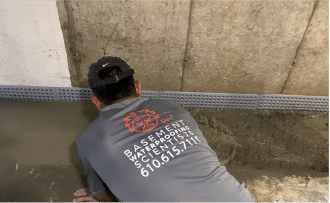Regarding sustaining the structure of your property or edifice, waterproofing is an crucial step that should always be overlooked. Including safeguarding your property against moisture damage to preventing the growth of mildew and fungus, efficient waterproofing solutions can spare you a significant amount in maintenance and headaches down the road. In a world increasingly aimed on sustainability, finding green waterproofing options becomes even more essential. This article discusses a range of environmentally friendly waterproofing solutions that both preserve your property but also reduce your carbon footprint.
The path towards proper waterproofing might seem intimidating, but it doesn't have to be. Comprehending the many techniques and materials available can empower you to take informed choices. If you are looking to waterproof your basement to stop flooding or exploring options for top waterproofing to protect your investment, our guide will outline everything you need to understand. We will tackle common fallacies, highlight the value of waterproofing in power conservation, and examine how environmentally conscious construction practices can integrate these solutions smoothly into your development plan. Let’s dive into the field of eco-friendly waterproofing and discover how you can efficiently protect your home while nurturing the environment.
Understanding the Value of Waterproofing
Waterproofing is a vital aspect of property maintenance that many homeowners and property managers overlook. It plays an important role in protecting structures from water damage, which can lead to costly repairs and health issues caused by fungus and mildew. By ensuring that your home or building is properly waterproofed, you not only preserve its structure but also enhance its overall value.
One reason waterproofing is vital is that it stops serious humidity-related problems. This includes challenges such as leaks in the foundation, basement flooding, and water intrusion in interior walls. These problems can escalate quickly, leading to extensive repairs that significantly impact your finances. Spending in waterproofing measures can save you thousands in repairs in the future and provide peace of mind knowing that your building is safe from moisture damage.
Besides safeguarding against water damage, proper waterproofing can improve energy conservation in structures. Well protected structures require less energy for heating efforts and cooling, as they reduce drafts and stop moisture from getting in and impacting indoor climate. By including waterproofing measures in your building plan, you are not only protecting your asset but also contributing to a more eco-friendly and efficient in energy use environment.
Essential Moisture-Proofing Strategies and Solutions

In the context of shielding your home from water damage, various waterproofing methods can be utilized. One of the most effective methods is the application of waterproof coatings and membranes. read this post here are designed to create a block against moisture, making them ideal for areas like roofs, walls, and basements. For instance, liquid-applied membranes can be used on horizontal roofs to prevent water intrusion, while cementitious finishes are excellent for basement walls that often experience hydrostatic pressure.
An additional method involves proper managing drainage. Installing drainage mechanisms such as drainage trenches can significantly reduce water build-up around your property. By redirecting rainwater away from the base, you can prevent it from leaking into your home. Additionally, confirming that gutters and downspouts are functioning properly can also minimize moisture ingress, protecting both the inner part and outside of your building from potential wetness and mildew formation.
For those looking for DIY options, using waterproof barriers and finishes is a common choice. These products can be easily applied to surfaces in need of protection, such as washrooms and cuisine spaces, where moisture is prevalent. However, it’s important to choose the right products based on the specific needs of each area, as some sealants may be more suitable against fungus, while others focus on preventing leaks. Ultimately, selecting the suitable waterproofing solution can save you thousands in repairs and prolong the lifespan of your home or building.
Choosing the Right Waterproofing Strategy for Your House
While determining a waterproofing solution for your property, it is essential to assess the specific requirements and vulnerabilities of your home. Take into account factors such as the climate, the nature of ground, and the existing architectural elements. For instance, homes in areas with significant downpours may call for additional robust methods compared to those in drier regions. Additionally, identifying the cause of potential water infiltration is crucial, as it can guide you in deciding between indoor and exterior waterproofing methods.
Do-It-Yourself methods can be an affordable option for homeowners familiar with renovation projects. On the other hand, for challenging issues or extensive areas, investing in contractor waterproofing help may be more beneficial. Professionals can offer specialized knowledge, ensuring the picked methods are suitable for your house’s specific conditions. Be sure to consider the pros and cons of DIY versus professional choices and consider consulting skilled contractors.
Ultimately, the materials and approaches you pick should align with your overall aims for the home. Look for sustainable waterproofing options that not just safeguard your home but also support sustainability. Assessing waterproofing solutions, their performance, and likely impact on the surroundings can help you make an informed decision that preserves the integrity of your home while being mindful of ecological considerations.
